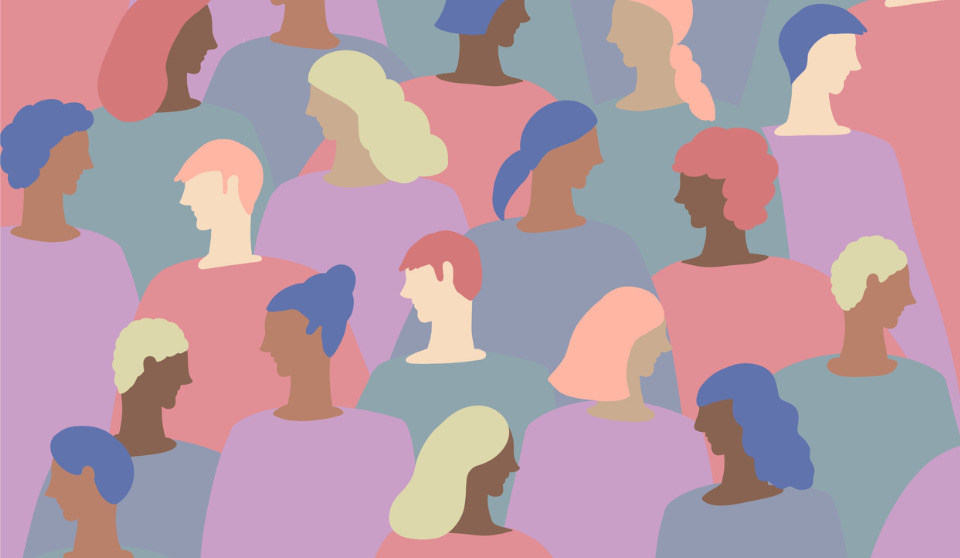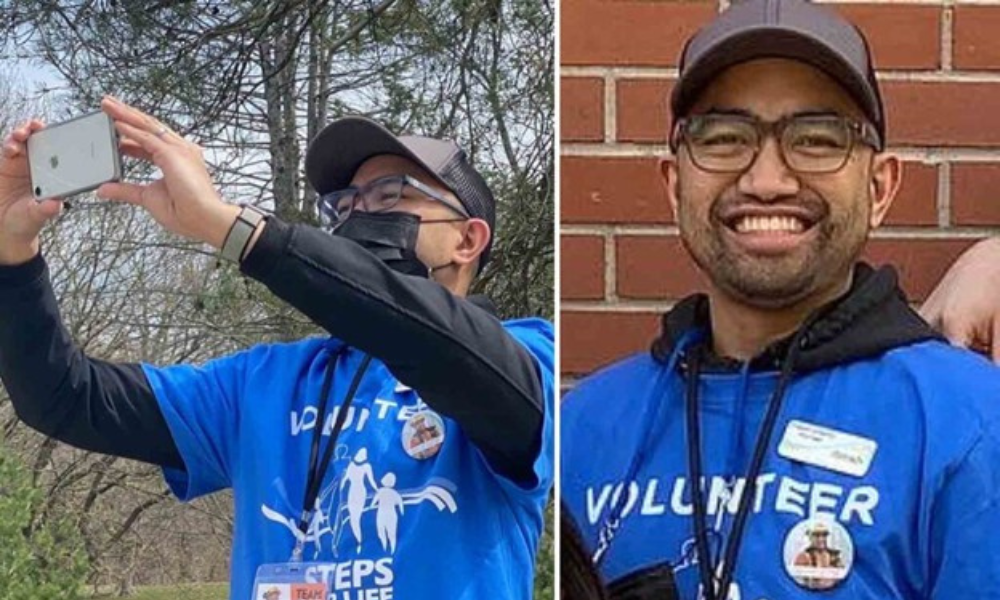Three leading voices in this area discuss key issues facing the Canadian workplace

The speakers:
Nadine Spencer [NS] is the CEO and president of BrandEq Group and is also currently serving as the president and CEO of the Black Business and Professional Association (BBPA). Spencer is an accomplished philanthropist who has been involved with numerous charitable organizations and focuses strongly on battling poverty and advancing women’s education. The BBPA was founded in 1983 as a non-profit organization. Its aim is to provide opportunities for Canada’s Black communities in areas such as business, employment, education and economic development.
Rod Graham [RG] is the co-CEO and president of modular solutions at Horizon North Logistics, which recently merged with Dexterra. Graham has a wealth of experience in the safety industry and has sat on 22 different corporate boards. He has been with Horizon North since 2015. Horizon North operates in 11 provinces and territories and has 50 Indigenous partnerships across Canada. This summer, the company employed around 1,000 Indigenous employees. Around 13 per cent to 15 per cent of Horizon North self-identifies as Indigenous.
Kelly J. Lendsay [KL] is the president and CEO of Indigenous Works (formerly the Aboriginal Human Resource Council). Lendsay is a social entrepreneur and proud Canadian Indigenous leader of Cree and Métis ancestry. He is recognized as one of Canada’s foremost experts in workplace models, corporate/Indigenous partnerships and Indigenous inclusion strategies. Indigenous Works was founded in 1998 as a non-profit organization with a mandate to improve the inclusion and engagement of Indigenous people in the Canadian economy.
The roundtable:
[COS] What does diversity, equality and inclusion look like to you?
[KL] “You can be diverse but not be inclusive. You can be diverse and have women, Indigenous peoples and persons with disabilities, but that doesn't mean you're an inclusive organization; it means you've got the differences. Being inclusive speaks to the values; it speaks to the true engagement of your practices, your strategies and your ethos that you incorporate as a workplace. And it's not only organization-centric, it's people-centric. So, inclusion is something that you will put on your website, you will say you're inclusive, you make these statements — and those public types of statements are important when supported by leadership, when practised by leadership, by managers and by employees every day.”
[NS] “One expression, which has become so cliché now, is that diversity is being asked to the party and inclusion is being asked to dance. Inclusion [is about language]. How can we have equitable language that is going to include everybody there so they don't feel isolated? How can the conversation be more of a neutral conversation where everyone can participate in that dialogue, in that inclusion? If you choose a particular type of language, it could exclude someone. So, yes, we can say we're inviting young Black women to participate, but if we exclude them at the meeting by having language that they can't participate in, there's no inclusion. You really have to focus on the inclusive part and actually making people feel like they're involved.”
“If you're looking at a diverse group of people and someone is not included, then it doesn't really make sense. So, diversity and inclusion [have] to go hand in hand. And it's interesting that it's two separate things, but I guess maybe it's about understanding. The inclusion part is the other piece of it. You can't have one without the other.”
[RG] “Inclusion is a very important word to me. As I take a look at the importance of how we're going to reconstruct our economy here, post this COVID experience, we're going to need 37 million Canadians pulling on a rope. We've always punched above our weight from a world perspective. And it's now more than ever that we're going to need every Canadians’ help. And, so, this notion of inclusion is where you get 100% of the brain power. So, what does inclusion mean to me? It’s 100% of the brain power in our country. And now more than ever, it's critically important. So, I use the term inclusion because we're bringing everybody along. And that's the only way that our country is going to move forward.
“This notion of inclusion is recognizing the fact that we're better off if we can bring the skills and experiences of folks that have come from a bunch of different experiences together, because that's the only way that we're going to be a better country — and quite frankly have a shot of getting our economy back on the right track. Inclusion is taking the best of our differences and melting them into this mosaic that we are as a country.”
[NS] “I approach discrimination from what I call three perspectives of unique attributes: I'm Black and I'm a woman and I'm a Black woman. All of those are three unique different things. Diversity has the benefit of providing a company with a pool of fresh, creative ideas arising from different backgrounds and perspectives. And this diversity in perspectives has historically enriched our society as a whole and offers the same value for businesses. So, when I look at diversity and inclusion, it's really an understanding of the unique attributes that make us all special. I think we need to embrace more of that.”
[COS] What steps is your business/organization taking to ensure a safer and more inclusive workplace?
[NS] “As a Black-owned business, our challenges are different from mainstream companies. For example, in a recent online conference with our staff and suppliers, all the participants were people of colour except for one person. We're very proud of having come as far as we have mainly with Black, female and visible minority talent. Our challenge will be to maintain our unique character while also being open to specialized talents that do not come from our own initial company.
“One of the things that we do is that we're open to everybody — I always say that we want to be the UN. And we make it a space where everyone feels safe, where they can contribute ideas, irrespective of anything whether that is sexual orientation, gender, race, etc.”
[RG] “I've gone out of my way within Horizon North to meet every one of my employees. I've been to every location and I've had the privilege of shaking the hand of every individual that works for us. And a big reason for that is to ask individuals that are out there [to] tell me about why you've come to Horizon North. What do you like about it? What can we do better? Explain to me if there is a better way of doing things?’ [Going back to the first question], there's a listening component that becomes part of inclusion. So, your diversity piece is a place to start, but I think there is this notion of listening and including everyone as part of the discussion.
“We've got a thing here [at my company] that we call ‘don't walk by’ and I really like it. From a physical safety perspective, it's intuitive: You're out [on] the floor, you walk around, you find a nail on the floor, OK, look, let's put it the garbage can. But don't walk by also can mean, in my mind, disrespectful editorial cartoons, off-colour jokes, etc. It’s the ability for anybody to effectively say ‘I'm not walking by this situation; I'm going to come back and I'm going to have a very direct peer-to-peer conversation with you about why I don't like this.’
“Culture has been defined by many as ‘the way we do things around here’ and what we want to do at Horizon North is create culture through good communication, good listening and underpinned by good policy and practices. What this means for us is a culture where everyone feels we are in this together, pulling the rope in the same direction.”
[NS] “I believe in valuing people. In our agency, we have something called ‘people matter’: When we work with individuals, when we work with campaigns or any plan that we're doing, we think about the person. So, when we're putting out a message, we think ‘who's going to see this message? How are they going to interpret the message? What will they feel when they read this? Are we offending? How are we using this medium to uplift, engage and amplify people's voices?’”
[RG] “Roughly 13 to 15 per cent of our workforce would be self-identified [as] Indigenous. So, Indigenous employment is important. You're operating within communities, being very mindful of how communities function and of the privilege of working in someone's community as opposed to being entitled. It starts with this conversation about how do you build trust and how do you build bridges.”
[COS] What issues are Canadian workplaces facing in this area?
[RG] “Right now is an interesting time in society. I think you've got a greater scrutiny from media. I think that you're starting to hear a better developed voice from various groups. I think that customers rightly are starting to demand better inclusion from their suppliers. And they're demonstrating that in the level of peaceful protests that you're seeing on the streets. People want better. And I think that it's important for customers and I think it's important for employees to effectively mirror each other in terms of being able to provide this inclusion component to it. From a legislation perspective, you're starting to see the bar rise. But I think you're hearing more voices and I'm glad people are getting a voice. It allows for folks that perhaps have not faced [discrimination] to better understand and level the playing field for this drive toward inclusion.”
[KL] “I think very much nowadays people are very much looking toward organizations that do espouse their morals and their values more so than before.”
[NS] “I think we have to have a clear policy and communication around discrimination, because in this climate today, I think companies don't know necessarily where to go. So, I think that that's part of the challenge. And unbiased hiring practices are an issue that companies need to look at. But, you know, most employers simply have not been taught how to approach diversity in a fair and inclusive way at all. That’s where all of us can make a difference. And if we commit, we can confront or call names — I don't want to shame people, but I think we have to call out names when it's not right. We have to address biases, not in a divisive way but in a manner that brings forth positive change.”
[KL] “You have to deal with these real perceptions and attitudes that are in society that I feel get carried into the workplace. And you have to break them down. And you have to replace them with facts.
“What companies are doing is they are taking this inclusive approach and they're looking at what are the systems and the practices that can be put in place. And when you do that, you start to identify key things that you can do. You look at policies that might help reinforce positive practices. So, an examination of policies is one approach. The preparation and training of people and managers, how they want them to manage and how they want them to supervise, is another. Those are very intentional types of strategies that can actually decrease or eliminate cases of harassment and discrimination. Another component is education. You have to educate people about the types of things that you can be doing and being very open about when there are problems and what do we do to change and address them.
“So often, we look at this from a negative point of view. I mean, we should be celebrating the thousands of interactions and the thousands of days where there's been no racism and there's been no discrimination. Safety companies brag about three years without an accident. Why aren't we bragging about three years without a legal lawsuit or human rights complaint?”
[COS] What steps can employers take to move toward better diversity, equality and inclusion in the workplace?
[KL] “There [have] to be areas of responsibility and accountability. We've looked at the systems that you need to put in place and people will create a committee and so on. But you really need to look at how do you integrate it in what we call an enterprise-wide approach? How does it actually go through the entire enterprise from the board of directors down to the shop floor so things really change? Otherwise, you tend to isolate it, you put it in a committee and it gets stuck there. Everyone feels that they’ve dealt with this because they have a committee. The committee is just the mechanism. How it gets animated through the entire enterprise is really one of the measures. The second one is leadership commitment. The CEO, the C-suite: What are their accountabilities around diversity, equality and inclusion?”
[NS] “Having a diverse HR team as part of your workplace environment is important, as is having a diversity statement. If we can have a diversity statement on the company careers page, it's important to show what the company culture and environment looks like. We don't want to imagine that there's a homogenous society looking in your organization when we live in a very diverse world. Those are just basic things: valuing human beings as they are and respecting and celebrating differences.”
[KL] “And then I think there is this idea of measurement and benchmarking. How do you translate knowledge of history and do things differently in the workplace? For example, how are you going to change your interview questions? How are you going to change your screening of resumés to make sure that you do not miss out on someone? How are your recruiters going to respond?”
[RG] “Policies are important and I've always believed that. That's a bedrock for how you work as an organization. But documents that are pinned to a wall, that are in peoples’ drawers, in my mind that that's not living and breathing. It really has to be cultural. And for it to be culture, I think there needs to be constant and better communication within an organization. That's town halls, active dialogue among groups, etc. It's one thing to have a policy; it's another one to have a living and breathing culture. So that's part of it, more active community involvement.”
[NS] “Inclusive language is an effective language: It's respectful, accurate and relevant to everyone. So, I think the first thing is inclusive language. The way we speak to each other should create a culture where everyone feels valued, respected and included, rather than undervalued or disrespected or demotivated. And, of course, having an environment of mentoring [is important]. When you invite people to be at the table, really invite them to be at the table.”
[RG] “Think like a businessperson: You're looking for a return on your investment. And that's what inclusion is — it's all about return on investment. You're investing in the future of the business, the division, the country. I'm convinced that, going forward, you will see a differentiation for those organizations that truly understand what inclusion means and then those that stay behind and view it purely as a cost of doing business. Inclusion is an investment. It's not a cost.”
This article originally appeared in the Sep/Oct 2020 issue of COS.





